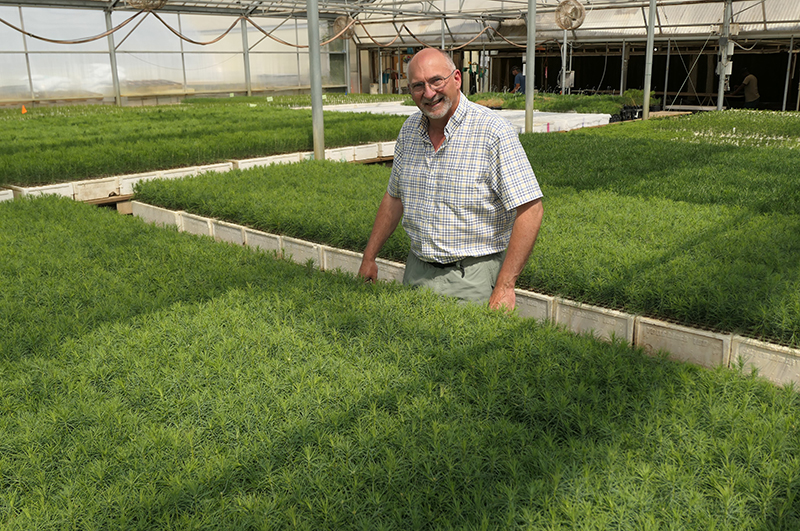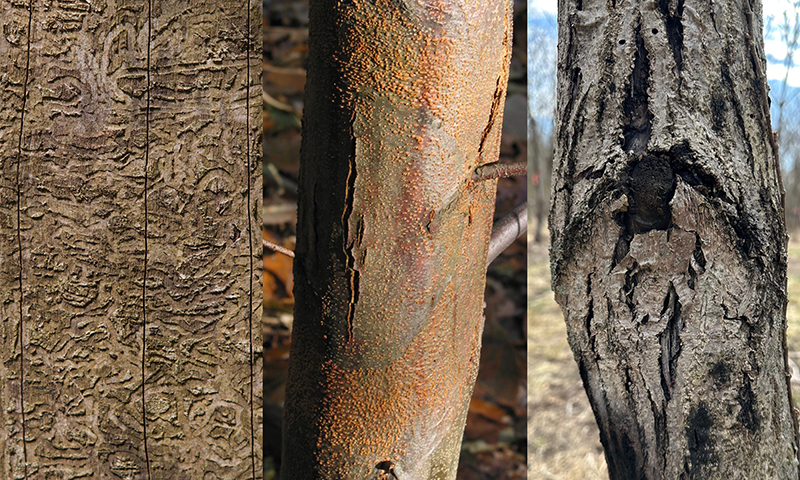Solution depends on regulators, scientists and public support
Many at-risk forest tree species will probably need biotechnology along with traditional tree-breeding approaches to survive, according to insights published in the July issue of the journal New Forests.
Purdue University’s Douglass Jacobs and Kasten Dumroese of the U.S. Forest Service led a team of 19 co-authors, including scientists, land managers and regulators, in presenting their findings on biotechnological risk assessment and forest tree restoration. Their New Forests paper, published in a special issue on threatened tree species, presents key outcomes of a 2021 virtual international conference on the issues.
Among their conclusions: Society drives policy. If genetic engineering is the only way to save some species, its use will require public acceptance.
“Biotechnology is a diverse toolkit comprising different technologies that can be used to impart pest resistance – it could be bugs or pathogens – in our threatened forest trees,” said Jacobs, the Fred M. van Eck Professor of Forest Biology. But many people mistakenly equate biotechnology with genetic engineering.
“Traditional tree breeding, whether you’re breeding different species or different varieties within species, has been going on for thousands of years. And the regulations on planting trees that have been traditionally bred are wide open,” he said. “Genetic engineering, on the other hand, is highly regulated, but all biotechnology is certainly not genetic engineering.”
Scientists often use genomics, for example, which involves working with the complete set of an organism’s genetic material, to learn more about what causes disease. Genomics also can help identify the genes responsible for useful traits such as pest resistance.
Blight began afflicting the American chestnut in the 1900s, killing billions of trees. Despite being the target of decades-long tree-breeding efforts, the chestnut’s prospects remain in doubt. The list of at-risk species also includes ash, butternut, and bristlecone pine among other members of the five-needle white pine family.
“I feel a sense of urgency. We can’t take a hundred years like we’ve taken with chestnut to turn the page,” said Dumroese, a research plant physiologist at the Forest Service’s Rocky Mountain Research Station in Idaho.
“The species are becoming ecologically extinct,” Dumroese said. “They’re not able to provide their historic level of ecosystem function because often they don’t grow to maturity. And that’s happening at a faster and faster pace. Look at how rapidly we’ve lost ash trees from our forests and urban landscapes because of the introduced insect pest emerald ash borer.”
The western white pine is an example of how the Forest Service has, starting in the 1960s, effectively used traditional tree breeding to cope with white pine blister rust. The white pine population remains below its pre-blister-rust levels, however, and may never become fully restored.
“But we see a lot more western white pine on the landscape and being planted on the landscape every year because of those efforts,” Dumroese said. “That process only took a couple of decades where we come from a big problem to making improvements. We need that pace for all of the species that we’re calling at risk.”
 Kasten Dumroese, a research plant physiologist at the Forest Service’s Rocky Mountain Research Station in Idaho, stands in a crop of western white pine seedlings. These seedlings, the result of traditional tree breeding for enhanced resistance to white pine blister rust, are growing at the University of Idaho’s Pitkin Forest Nursery. (Photo provided by USDA Forest Service/Anthony Vaudo)
Kasten Dumroese, a research plant physiologist at the Forest Service’s Rocky Mountain Research Station in Idaho, stands in a crop of western white pine seedlings. These seedlings, the result of traditional tree breeding for enhanced resistance to white pine blister rust, are growing at the University of Idaho’s Pitkin Forest Nursery. (Photo provided by USDA Forest Service/Anthony Vaudo) Back in Indiana, the Hardwood Tree Improvement & Regeneration Center, a joint effort between Purdue and the Forest Service, for years has maintained a breeding program for pest resistance. Almost all of the center’s efforts to date have focused on traditional tree breeding and genomics.
“The chance to work with chestnut and help reintroduce it back to the landscape was a big reason I took the Purdue job in the first place back in December of 2001,” Jacobs said. “Watching species disappear from the landscape provides me personally with a lot of motivation to contribute whatever I can toward helping to save some of these at-risk species.”
In the last 10 years, Jacobs has seen striking advancements in novel biotechnologies that use genomics and genetic engineering.
“For some species, traditional tree breeding doesn’t appear to be a viable long-term option to get disease-resistant trees. In those cases, it’s probably going to have to be genetic engineering if we want to save the species,” he said.
That applies even to a species like the blight-afflicted American chestnut, the target of a breeding program for 50 years. “Introducing enough chestnut and ash trees to bring us back to the pre-disturbance level is likely not possible in anyone’s lifetime, but you have to start somewhere,” Dumroese noted.
The participants of the 2021 conference came to a consensus on the applicability of biotechnology toward reintroducing some threatened forest tree species. They came from academia, the Forest Service, and organizations such as the American Chestnut Foundation and the Nature Conservancy.
“Societal perception and policy remain the weakest links,” Jacobs said. “There’s been this consistent one-way flow of information from scientists to the public with the idea of, ‘Hey, we’re scientists, trust us.’ Or ‘We’re the government, trust us.’ But you need a much more interactive dialogue to be successful in changing public opinion.”
Support for the conference and related work was provided by the U.S. Department of Agriculture Forest Service and National Institute of Food and Agriculture.






